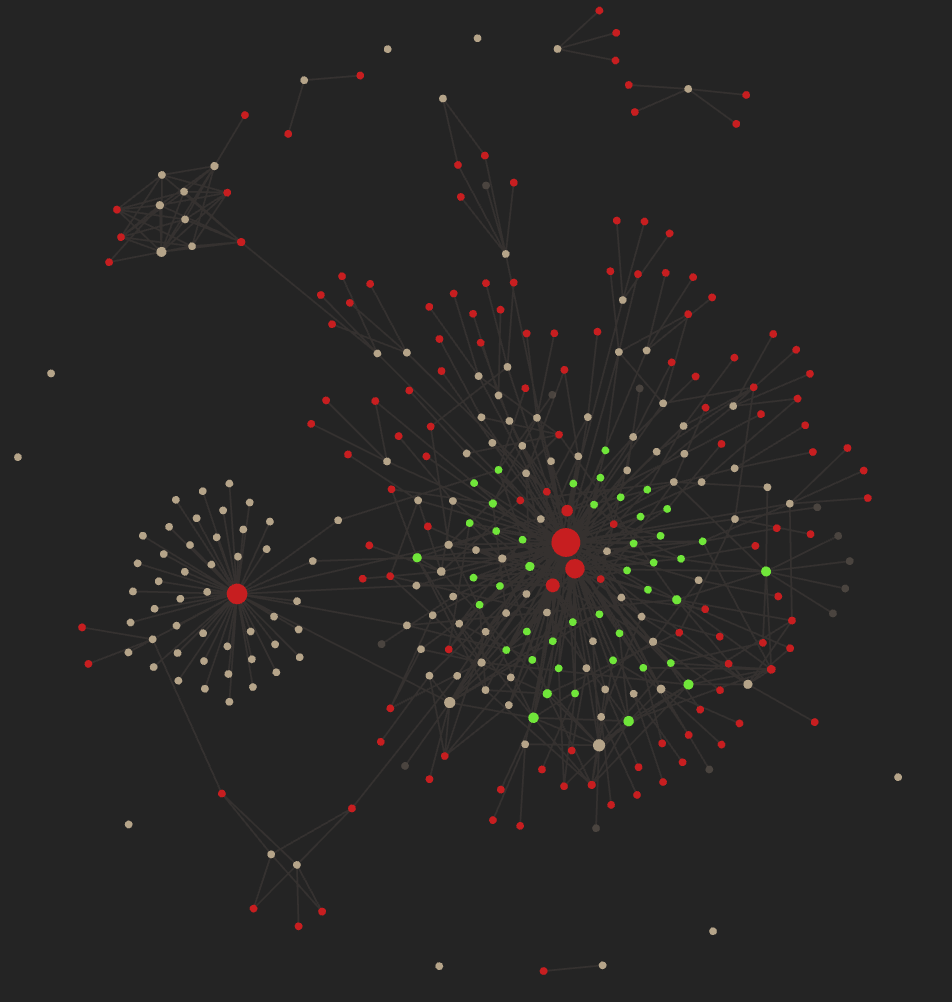Effective onboarding at a new job
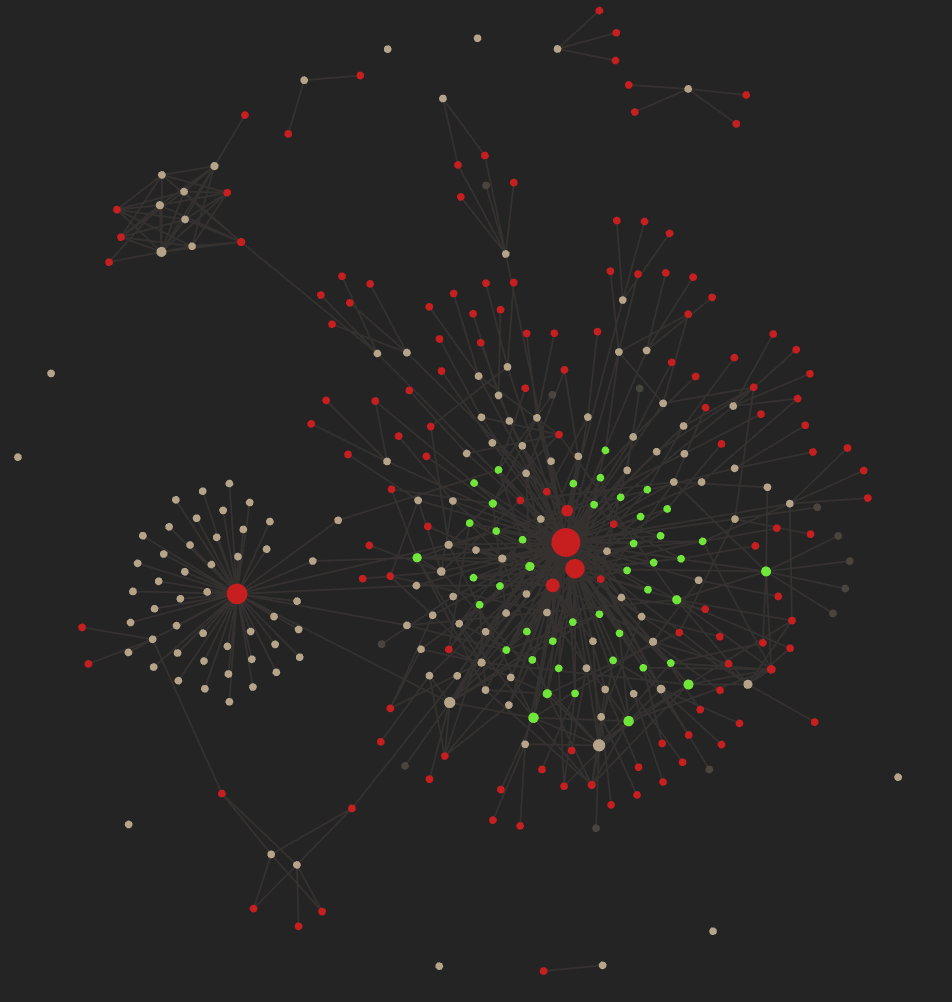
DISCLAIMER: Posts online about accelerated learning can be full of misleading information, or advice that is impractical for most. Claims of boosting productivity can be very questionable and often inspire people to spend a lot of time tinkering with productivity tools rather than actually being productive. With that said, I’ve tried to minimise the bullshit and hopefully create an interesting post that may have some useful advice.
Background
Job Switch
Honestly, I’m going to skip most of the preamble. This isn’t a curry recipe that needs 30 minutes of backstory before I get to the instructions. Long story short, I left a job of 8 years to move to a new company: Productboard. Although it’s been a while since I changed jobs, I remembered how alien a lot of the concepts, terms and acronyms had been the last time. So, I decided to get ahead of that.
Learning
If you don’t know me, I’m a huge fan of learning to learn. Having been proactive at learning for such a long time I feel like I can pick up new skills or concepts relatively quickly now. For my new job, I decided to implement a mini workflow for taking on all of these new bits of information I’m going to get. There are two main tools I use in my non-work related knowledge-based learning:
- Obsidian
- A markdown based note-taking tool that has exploded in popularity.
- Anki
- A tool for learning via Spaced Repetition. One of the most powerful programs I’ve ever come across. I started using it maybe 7 years ago and have used it to memorise all sorts of information (including a lot of useless stuff like the periodic table and US presidents!)
Workflow
The important thing for me is to keep my workflow simple.
Obsidian
Obsidian is insanely powerful but, again, simplicity and pragmatism is my goal here. I use Obsidian to take notes as the need comes up and then I either tag them or link them in some way to other notes I’ve already taken.
Plugins
First, some plugins that make some of the rest of this work:
- Templater (for dynamic results)
- Tasks (for task management)
- Flashcards (for Anki integration) I’ll explain more about each in the rest of the post.
Templates
I use some basic templates to make my process a little quicker, with some Templater magic to dynamically create some of the values, for example:
Productboard template:
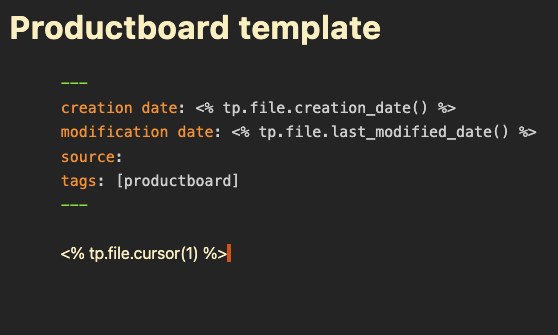
People template:
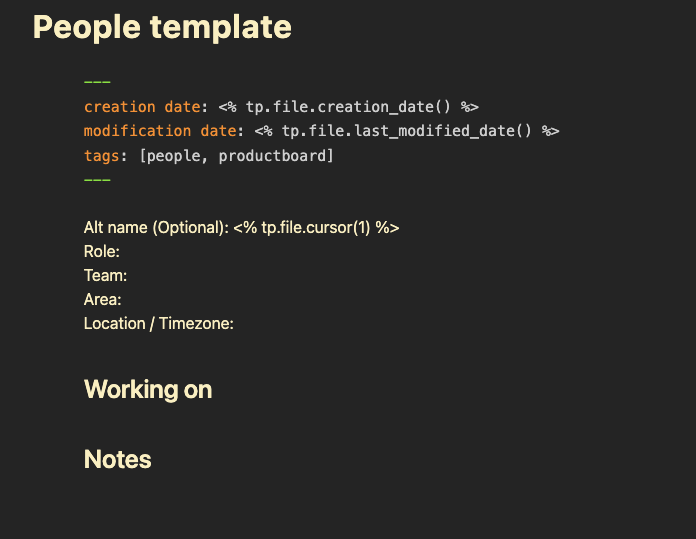
Note: If it’s not obvious, the tp.* blocks are Templater functions.
Why do I have Alt name in there? I work with a lot of people from Czechia and most of them have a nickname to differentiate themselves since first names can be super common (similar to Mark/Michael/etc. in Ireland). I use Alt name for their actual name usually, since the nickname is more commonly used and will be what pops up on Slack etc.
Anki
As mentioned above, Anki is for memorising via Spaced Repetition. I don’t want to memorise every note in Obsidian, but there are certain things that are useful to know off by heart. To make a note automatically import to Anki I use the Flashcards plugin.
Create a new note for the topic. I’ve chosen the company Core Values here which isn’t a good example but it’ll do for demonstrative purposes.
Make sure the metadata contains the deck I want to associate it with in Anki:

Create a section title, which will be the front of the card, and some content below it, which will be the back of the card. Then tag it with
#card-reversewhich creates the card and creates a second card with the front and back swapped round. Using#cardjust creates the one card, which is fine too, depending on what I'm trying to learn:
Make sure Anki is open on the same machine you have Obsidian open (after setting up the Flashcards plugin).
Use the
Generate Flashcardscommand, either via the sidebar menu or via the command palette.Check Anki and you’ll see the deck with the cards generated.
If you’re using mobile (e.g. AnkiDroid), then open it up and sync and you’ll see your cards there too. Front:
.png) Back:
Back:-ae05987b.png)
The Spaced Repetition will mean that I’m shown the card, then again 10 mins later, a day later, a few days later, etc., with time increasing exponentially. After only a handful of reviews it’ll be weeks and months before the next one. I have cards from my other decks that I only see every few years and they’re ingrained in memory like I saw them yesterday. Amazing process for so little effort overall!
AnkiDroid Tip: One thing I suggest if using Anki on Android is to use the widget that comes with the app. That means when you go to your homescreen, you’ll see Anki right away and it’ll show you how many cards you have to review. It’s an easy way of keeping the habit up.
Special Shout-Outs
Tasks
I’m also using Obsidian for tasks. Yes, this isn’t strictly for onboarding but it did mean I was able to move my Todos to the same tool, and link stuff back to my notes as I go. This has been super helpful. For my workflow, I open up a daily note and have a hotkey which opens the Create/Edit task modal. It looks like:
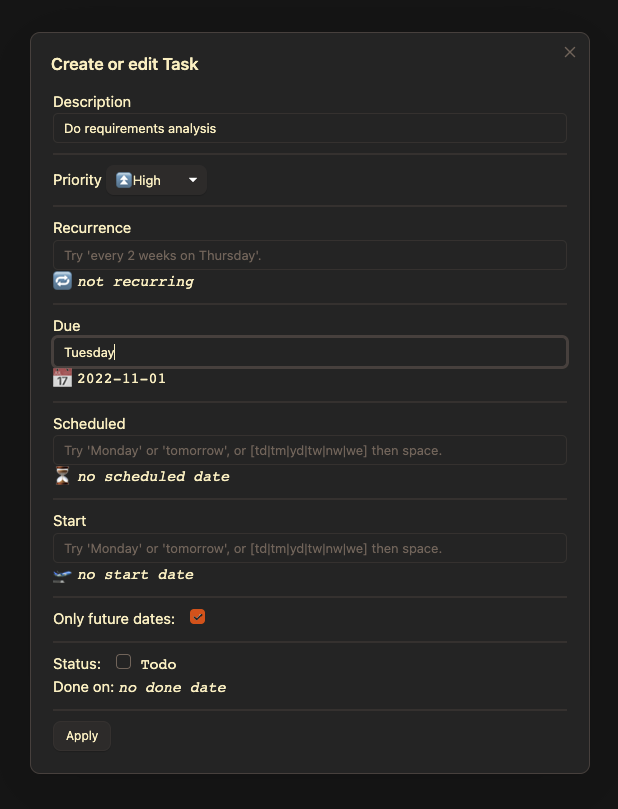
Acronyms
There’s an acronym bot for Slack. If your company uses Slack then it’s likely a handy addition. Use it like so:
/explain VOC Voice Of the Customer. A summary of customers' expectations, preferences and aversions.
I’ve not it used it heavily yet but I can definitely see how it would be useful, especially if assimilated into the onboarding process.
The End
I’ll remind you once again of my disclaimer at the top before I let you go. This process has worked for me and it’s allowed me to actually be productive without getting sucked into a productivity vortex. I hope you found this useful or at least insightful. One other bonus is the pretty graph you get with Obsidian that show you how your knowledge is accumulating. You can tag the node types too e.g. my green nodes/notes are people:
